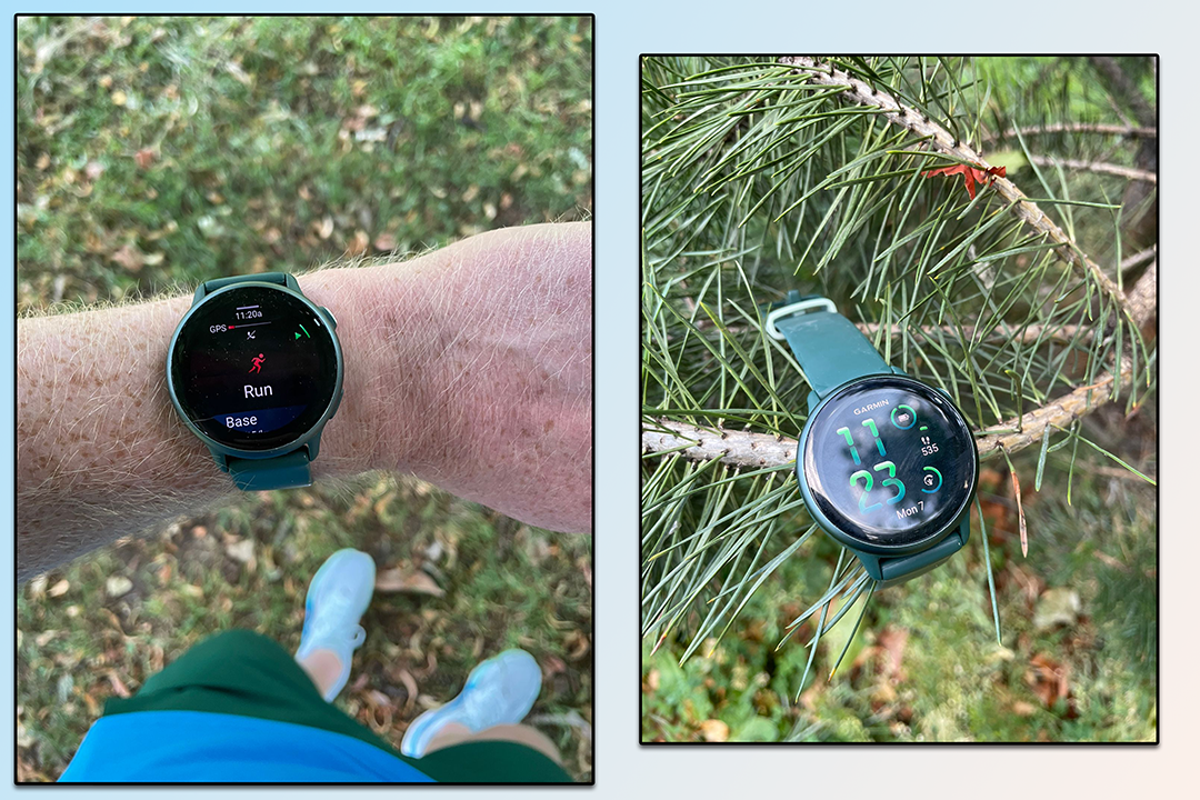
Ardent runners approach new Garmin watches like music fans await an album release. But personally, I don’t think the vívoactive 6 is made for ardent runners. It’s a svelte and versatile smartwatch designed for pretty much everyone else.
As someone whose varied weekly exercise regime often takes them from the gym to the padel court to the top of a mountain, I found there was a lot to like about this gadget. The watch’s broad data points and insights allowed me to keep tabs on my sporting performance, sleep and general wellbeing, all at a price that’s more affordable than most premium rivals.
I subbed the vívoactive 6 in for my usual Apple Watch ultra 2, and immediately enjoyed the slimmer fit and lighter weight (36g with band). Having up to 11 days of battery life to play with, rather than my Apple Watch’s two at most, was a welcome change too.
On the other hand, the Garmin’s interactions with my iPhone weren’t as smooth, the app wasn’t as user-friendly and I didn’t have the same plethora of apps to play with. But I actually found the on-watch health tracking metrics were presented in a more digestible – and consequently, actionable – way than the Apple Watch.
Garmin’s sleep tracking and body battery features were personal favourites, taking a leaf out of Whoop’s book and ranking my daily status in both categories out of 100. As a competitive person, this was all the motivation I needed to head to bed a little bit earlier, and feel all the better for it the following morning.
But unlike Whoop, it has a bright Amoled touchscreen, alongside modern fitness tracker staples such as a step counter, heart rate monitoring and sports tracking. For this reason, I think the Garmin vívoactive 6 is an excellent option for anyone looking for a reasonably-priced all-rounder. But could it persuade me to permanently part with its competitors? Let’s find out.
How I tested the Garmin vívoactive 6
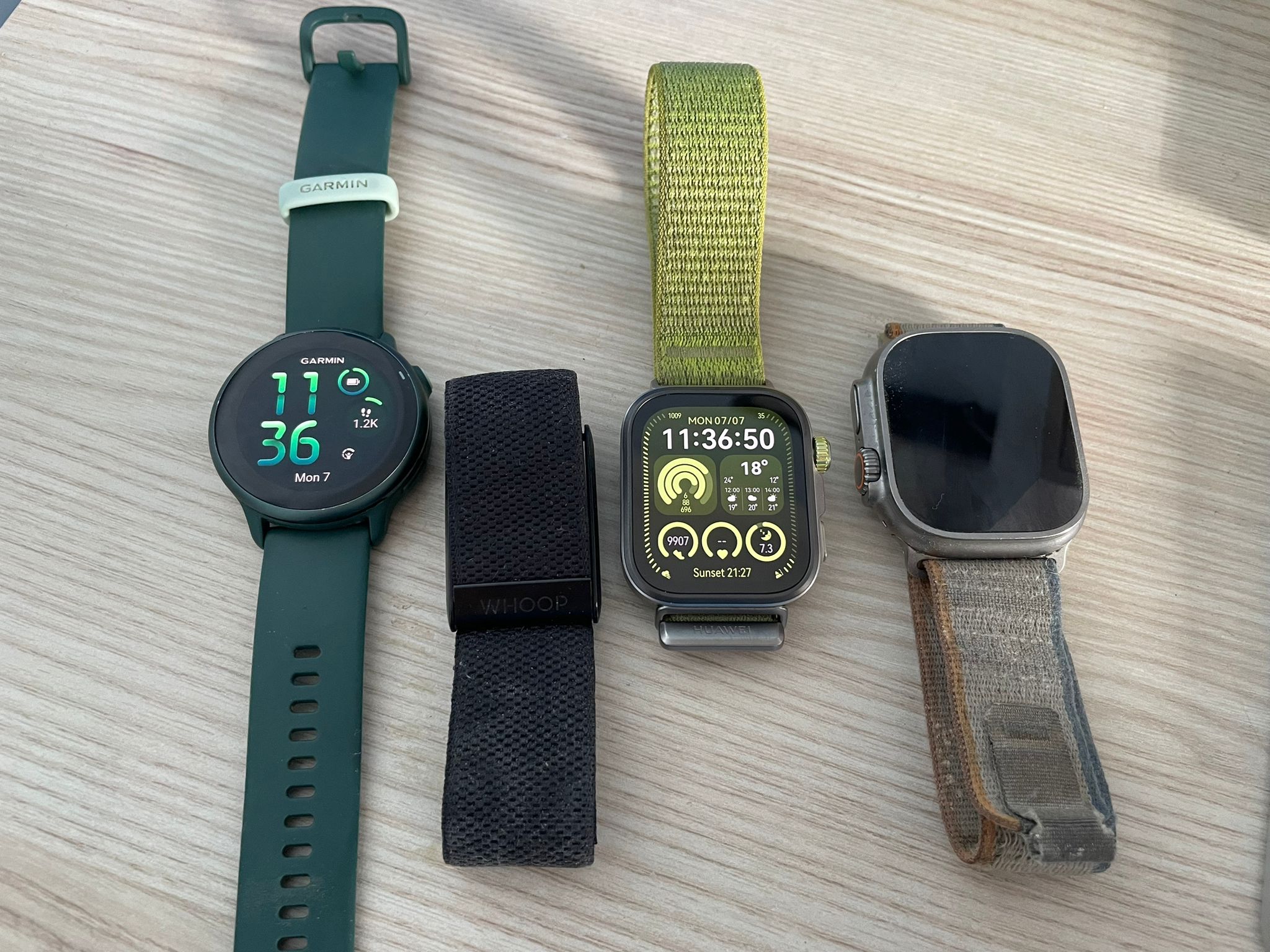
A smartwatch is designed to rarely leave your wrist. So, charging aside, I wore the Garmin vívoactive 6 for non-stop for two months. In this time, I used it to track regular runs, custom interval sessions, gym trips, strength training sessions and CrossFit workouts. I also used it for several other activities, including competitive sports and swimming. Wearing the smartwatch consistently allowed me to use its lifestyle features too, including stress and sleep tracking. I then used these features to tweak my routine and monitored the results. As with any smartwatch, I was looking for accuracy and plenty of data on both my exercise and lifestyle performance. I also wanted this data to be presented in an accessible way – on the watch and via an app – so I could understand it then make changes to improve my numbers. Bonus points were available for comfort and style – if I’m going to be wearing something 24/7, it doesn’t hurt if it looks good.
Why you can trust IndyBest reviews
As The Independent’s senior fitness writer, an avid exerciser and a CrossFit level one trainer outside of working hours, my average week provides a perfect testing ground for fitness products. Not only does my routine mean I can put products to the test effectively, but it also means I have amassed years of experience using various smartwatches, fitness footwear, apparel and lifting accessories. For this reason, I have a good point of comparison when reviewing new products, and I can recommend the best ones for your specific needs – and the ones you shouldn’t bother parting with your hard-earned cash for.
Garmin vívoactive 6
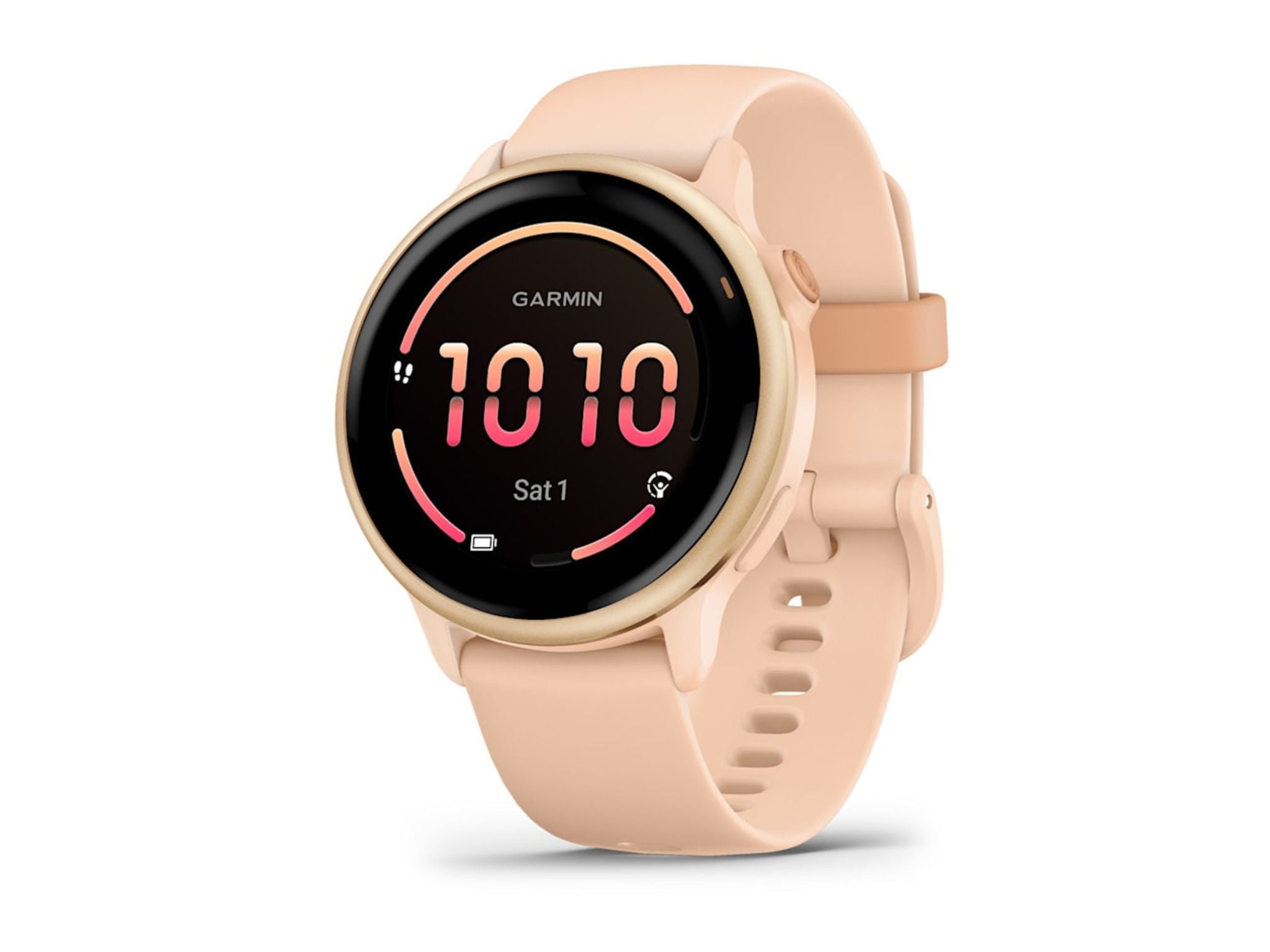
Battery life: 11 days in smartwatch mode and 21 hours in GPS mode
Size: 1.66in x 1.66in x 0.43in
Strap options: Leather or silicone quick release bands
Waterproof: Water resistant with a rating of 5ATM (withstands pressures equivalent to a depth of 50 metres)
Why we love it
- Slim, lightweight design
- Versatile, with 80+ sports tracking options
- Digestible health, sleep and stress tracking features
Take note
- No third-party apps
- Doesn't have Garmin's latest sensor technology
- No barometric altometer or dual-frequency GPS
To cut a long story short, I’m a fan of the Garmin vívoactive 6. As someone who rarely wore watches growing up, I like how the slimline design sits inconspicuously on the wrist – it’s so light I often forget I’m wearing it – and having up to 11 days of battery life means I’m far less likely to be caught out than with my usual Apple Watch.
The round face doesn’t derail your style choices, I can record pretty much any sport I try my hand at thanks to the 80-plus tracking modes, and the general health insights around sleep and stress offer actionable insights to help me tweak my weekly routine for the better.
It can’t match the Apple Watch for apps and smartwatch features, the Whoop for lifestyle insights, or even more specialist Garmin wearables for run-tracking. But as a more affordable jack of all trades, it’s excellent value for money for generalists like myself.
I don’t have a sub-three hour marathon time, nor has anyone ever paid me to play any sport. I can lift weights that are heavy for some and a warm-up for others, while my Hyrox time is good-not-great. But I love moving and make a point of doing it in as many ways as possible.
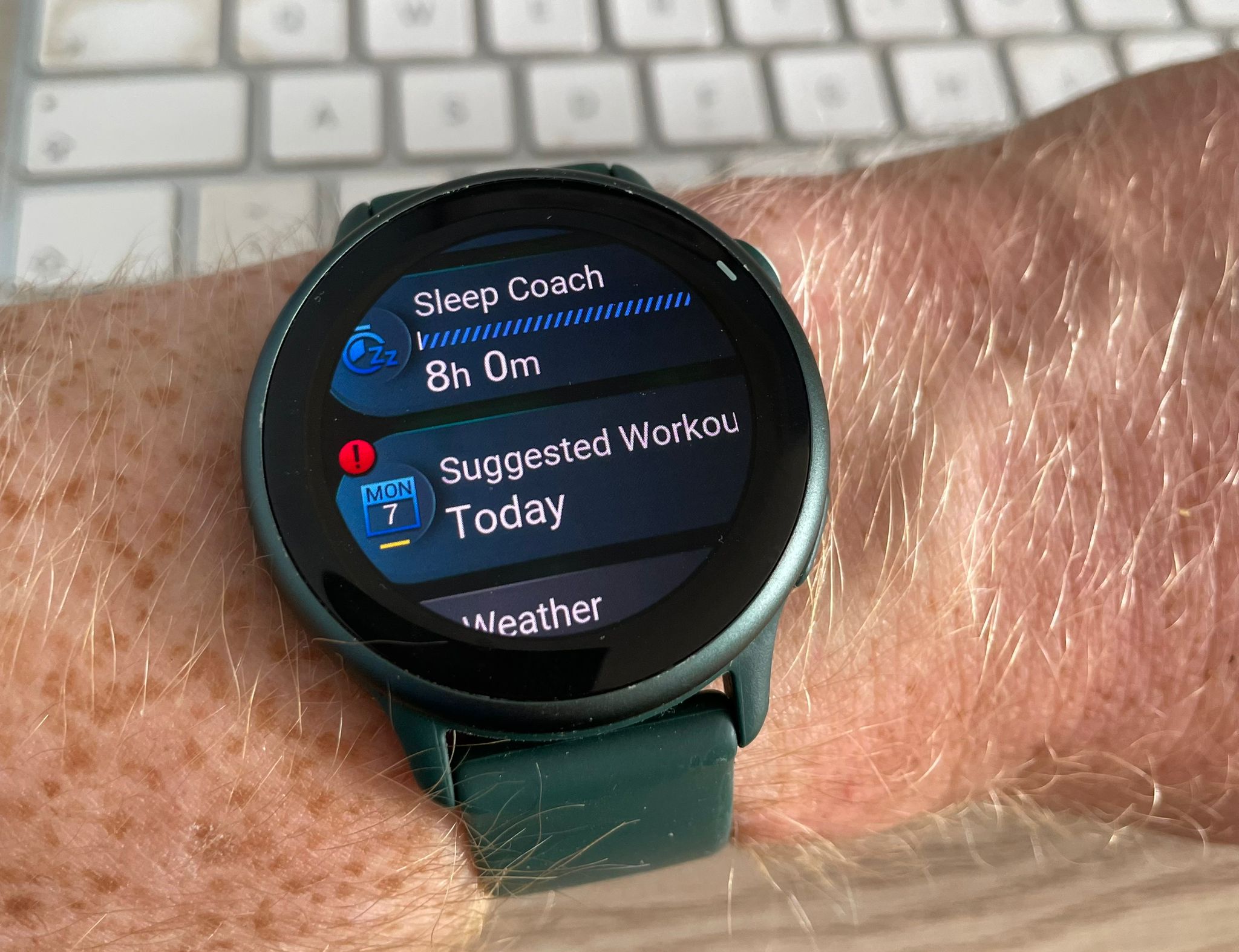
This is where the vívoactive 6 excels. Whether I decide to climb a mountain with friends, pick up a padel racket or hit the water for some paddleboarding, there’s an option for that. The only area I felt it missed the mark somewhat was during my gym sessions. My general workouts contain a CrossFit-inspired blend of strength training, Olympic lifting, gymnastics and HIIT-style workouts.
On the Apple Watch, I liked that I could hit go on a “functional fitness” workout at the start of my session and let it run until the end. With the vívoactive 6, I had to record my strength training and HIIT workouts separately. The strength training tracking also tries to automatically count reps and sets, although I found this wasn’t too helpful for me. When I have my head down during a lifting session, I prefer to focus on the exercise at hand without looking at my watch all too often.
As you might expect from a Garmin, the running features are very solid – if not quite on par with the likes of the brand’s fenix and forerunner lines due to a lack of barometric altimeter to track elevation, and the use of the brand’s last generation heart rate monitor.
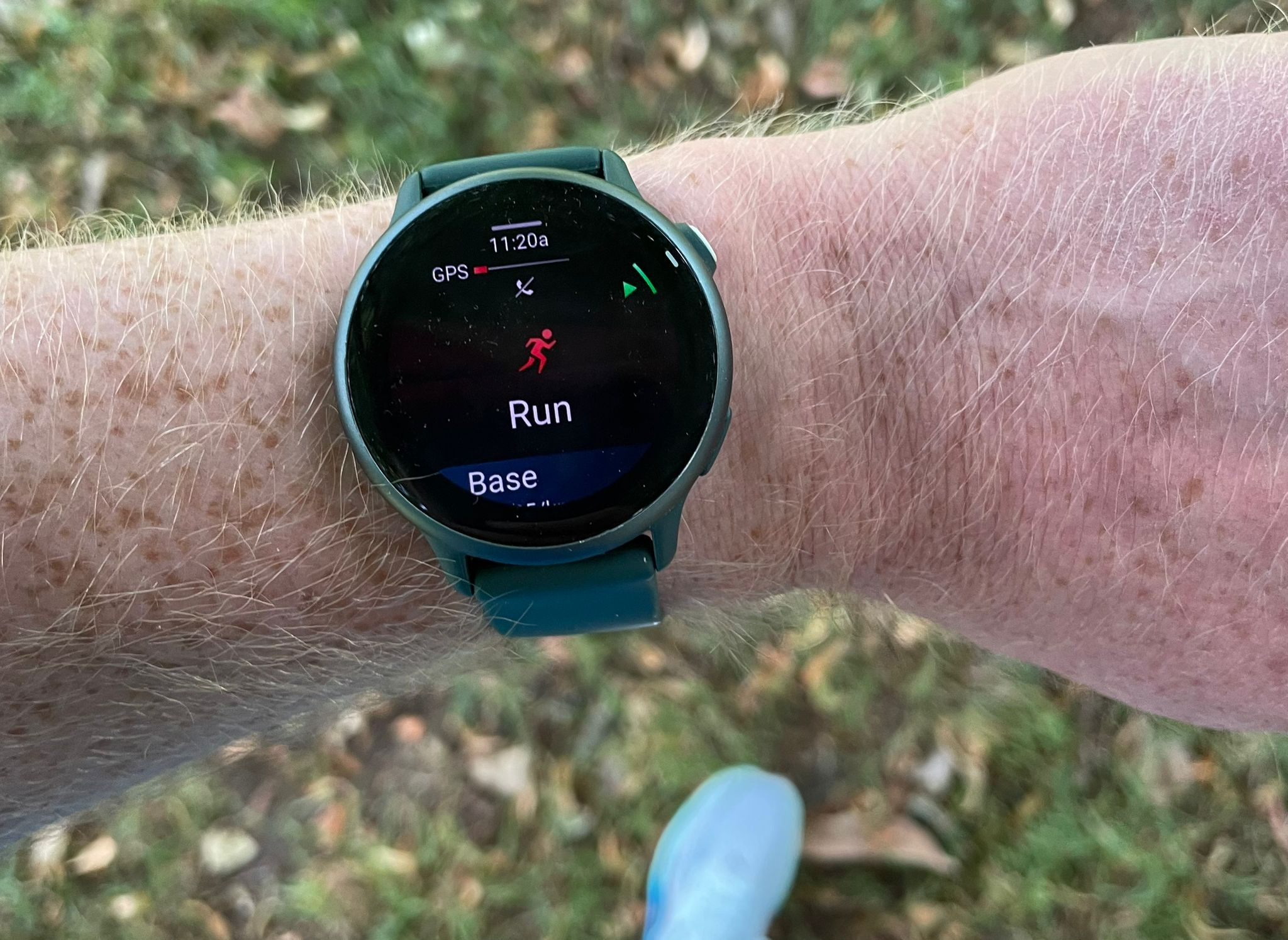
You can create custom interval sessions fairly easily on the app, setting target times and paces; there is a virtual coach available for a range of distances at no extra cost via the Garmin Coach feature; it provides race-day pacing strategies; and you receive in-depth running metrics on factors such as cadence, ground contact time and stride length.
However, perhaps unexpectedly for a Garmin, it was the non-exercise features I enjoyed the most. Where Apple challenges you to “close your rings” by completing a daily step, move (active calories) and stand goal, Garmin scores your sleep and body battery out of 100 to dissuade you from 2am social media spirals.
A snackable morning report reveals your sleep quality and how long you spent in each sleep stage (deep, light, REM, awake) then provides actionable advice on how to approach your day – this includes how much sleep you should aim for the following night, and the “recovery hours” needed before your body is back to feeling its best after hard workouts.
The app also has an “at a glance” section showing your heart rate, intensity minutes, steps, estimated daily calorie burn, heart rate variability status, stress, fitness age (calculated using factors such as BMI, levels of vigorous exercise and resting heart rate) and VO2 max. Several of these are presented on colour-coded graphs to signify whether your results are poor, fair, good, excellent or superior, and the app provides guidance on how you can improve them.
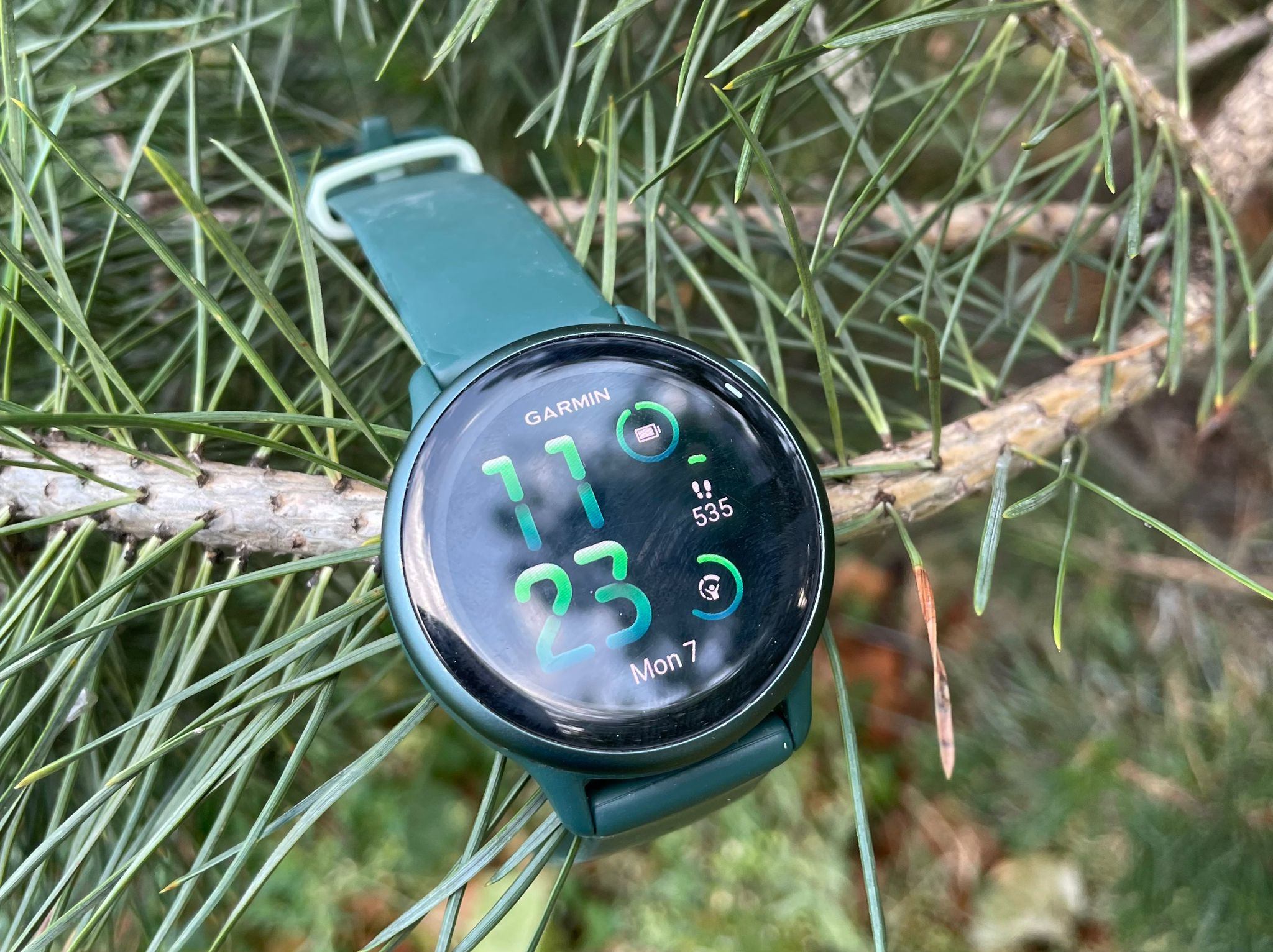
The sum of these parts is actionable takeaways I was able to use to improve my health and performance, which in my eyes is exactly what a fitness tracker is for.
You don’t get premium features like an ECG, skin temperature sensor, Garmin’s latest sensor technology or multi-band GPS, so data might not be quite as accurate as the likes of the most recent fenix and venu models. But for the vívoactive’s target audience – the everyday exerciser – these features are likely surplus to requirements.
I did find the Garmin Connect app a little less user-friendly than the Apple Fitness app at first. Being an iPhone user, the latter’s bright colours and blocky, almost childlike, designs came naturally to me, while the Garmin app was a bit more wordy and officious. But after a few weeks of wear, I was navigating the Garmin platform with relative ease.
Buy now £270.00, Garmin.com
The verdict
The Garmin vívoactive 6 is a fantastic smartwatch for the everyday exerciser. Running specialists might want a more specced up Garmin, Whoop remains the go-to for lifestyle optimisers, while those looking for apps galore will be better-served by an Apple Watch. But for people who fancy a good balance of everything at a decent price (£279.99 RRP), I think the vívoactive 6 is the top option on the market.
The offering for runners is better than most, with virtual coaching, custom workout creation and plenty of metrics to sink your teeth into. The lack of a barometric altimeter for detailed elevation tracking is a shame, alongside other premium features, but these omissions won’t hit recreational runners too hard.
Sleep tracking is detailed – although it did miss my first few hours of slumber on a couple of occasions – with a digestible morning report containing a sleep score out of 100 alongside a breakdown of sleep stages, heart rate variability and more.
With 80-plus sports tracking modes, even those with the most eclectic exercise routines should be covered, and the general health tracking is excellent. I particularly enjoyed Garmin’s body battery feature, which monitors your energy levels throughout the day based on your sleep, stress, activity levels and heart rate variability. This helped me learn when to push and when to pull back with my training.
But my favourite thing about the watch was the fit. It’s so light and svelte that I forgot I was wearing it on several occasions, and it proved to be more unobtrusive than my chunky apple Watch ultra 2 in the gym, especially for exercises like front squats and kettlebell cleans.







